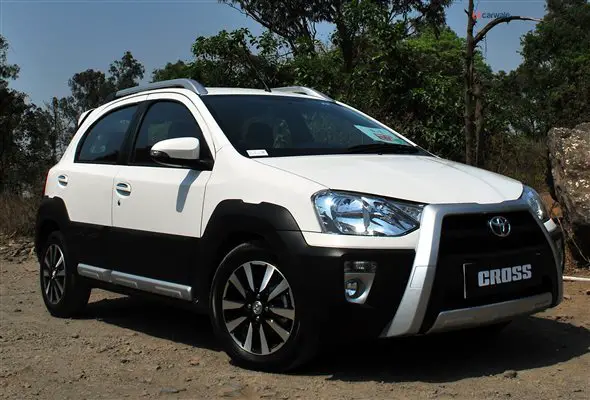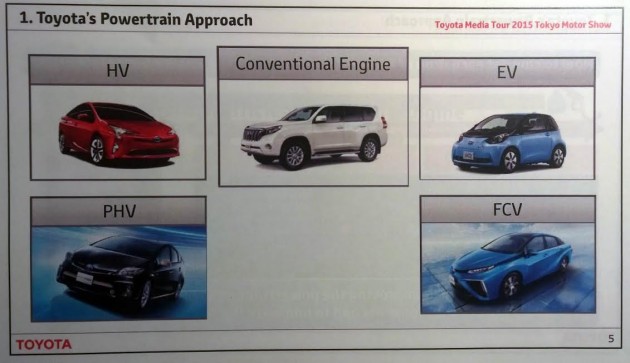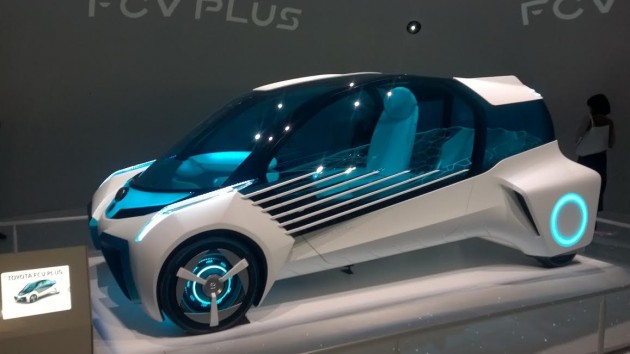Tesla Trumps Toyota Part II: The Big Problem With Hydrogen Fuel Cell Vehicles
The biggest problem hydrogen fuel cell vehicles face is that they deliver no obvious major consumer (or societal/environmental) benefit compared to the competition, but have a bunch of obvious consumer defects. These defects include high first cost, high fueling cost (compared to both gasoline and electricity), lack of fueling stations and lack of a nationwide fuel-delivery infrastructure — especially for renewable hydrogen.
It would take several miracles to overcome all of those problems simultaneously in the coming decades. Last year, for instance, a major independent study concluded: “Hobbled by High Cost, Hydrogen Fuel Cells Will Be a Modest $3 Billion Market in 2030.” And beyond solving the myriad problems needed to make hydrogen cars practical and affordable, one of the miracles needed for their marketplace triumph would be that all of the competing vehicles, such as electric vehicles or advanced hybrids, fail to make any major advances at all during the same time.
Back in the 1990s, people were excited about a variety of different alternative fuel vehicles — electric vehicles (EVs), hydrogen fuel cell vehicles (FCVs), and cars running on natural gas, methanol, and ethanol, to name some of the most common ones we pursued when I was helping to oversee the effort at the
Energy Department. A key focus then was reducing our dependence on imported oil, and the environmental issue of greatest concern was reducing tail-pipe emissions of things like NOx (nitrogen oxides) in order to reduce urban air pollution, smog (which is also caused by volatile organic compounds aka VOCs), and acid rain (which is also caused by SOx).
States like California in particular were extremely concerned about tailpipe emissions and wanted to promote zero-emission vehicles — hence the great interest in EVs and FCVs, the only plausible candidates for zero tailpipe emissions.
One big problem for both EVs and FCVs (besides their cost and technological limitations at the time) was that the EPA drove the oil industry to improve its gasoline formulation, dramatically reducing the sulfur content (a process that will likely continue for a while). That in turn helped the automobile industry provide vehicles that dramatically improve all tail-pipe emissions, with the exception of CO2.
But Toyota in particular addressed all emissions problems (and the oil consumption problem) with its amazing 2004 Prius, arguably the world’s first truly practical and affordable (i.e. mass market) green car. The Prius was not merely almost twice as fuel-efficient as cars in its class, it was also a PZEV — a partial zero emission vehicle. That meant the vehicle had zero evaporative emissions of gasoline VOCs and substantially lower emissions of other regulated air pollutants compared to a typical new car at the time. So, for instance, the Prius has emissions of only 0.02 grams of NOx per mile!
From a green consumer perspective, if you wanted a car that slashed oil consumption, slashed carbon pollution, slashed tailpipe emissions, was affordable and could be fueled everywhere — heck, that required half the trips to the gas station and had an incredible range — you could buy a Prius. You could also buy some of the few other PZEV hybrids. Or merely a fuel-efficient PZEV. And many people did!
Those advances in gasoline-fueled cars definitely undercut the consumer value proposition, and government motivation, for alternative fuel vehicles (AFVs), including EVs and FCVs. How much extra cost and inconvenience would the average car buyer be willing to accept just to reduce tail pipe emissions from the already very low 0.02 gms NOx down to 0.00 (and to reduce evaporator emissions not at all)? The answer was, unsurprisingly, “not bloody much.”
But over the past two decades, while concern over new car tailpipe emissions dropped somewhat, concern over CO2 emissions has grown — and not just in the U.S. but globally, where most new cars are sold. And that meant renewed interest in a true ZEV, one that didn’t just have zero tailpipe emissions, but one that ran on a fuel that itself was virtually emission-free AND carbon-free.
At the same time, manufacturers and entrepreneurs kept working on improving ZEV technology. The Bush Administration launched its (in)famous hydrogen car initiative, dramatically boosting spending on hydrogen fuel cell vehicles (funded in part by slashing efforts to work with big energy-using companies to develop and deploy near-term energy-efficient technologies). And massive amounts of money were poured into improving batteries and related components, not just by governments, car makers and clean energy venture capitalists, but also by portable device and phone manufacturers who wanted to improve performance while cutting costs.
The results in the case of batteries have been impressive:
And so we have seen the introduction of many vehicles by many carmakers that are either pure EVs (like the Tesla) or plug-in hybrid electric vehicles (PHEVs), like the Chevy Volt, advanced hybrids that can run a short commuter-scale distance on pure electricity before either reverting to the onboard gasoline engine or requiring a stop to recharge.
Yet, as I said in Part I, it is reasonable to argue that pure electric vehicles (and to a lesser extent plug-in hybrids) have not completely crossed the threshold of becoming practical mass-market cars — at least in the U.S. market where many consumers expect to be able to use their car for long distance travel with rapid road-side refueling. Sales of pure EVs have been soaring in places where people tend to have different expectations for their cars.
But there remain essentially no commercial FCVs and certainly no practical ones. Yes, many car companies like Toyota have continued to develop fuel-cell vehicles and bring down their costs, to the point where some are planning to introduce FCVs into the U.S. market, but at high (Tesla-level prices) with few refueling station options in most markets (and virtually no green refueling options).
I also explained in Part I why FCVs simply aren’t green compared to EVs nor are they likely to become so for the foreseeable future. In part, that’s because green hydrogen from renewable power requires one to waste a large fraction of that premium resource.
Here are the numbers from the Advanced Power and Energy Program at UC Irvine:
EVvsFCV
The situation is even worse for FCVs, or what the figure calls Fuel Cell Electric Vehicles (FCEVs). The two best cases for FCEVs in the chart — a hydrogen pipeline system from central station renewable generation and onsite renewable generation and electrolysis — are wildly implausible for many decades to come, if ever (as I’ll discuss in Part III).
But in any case, we have this huge global warming problem going on right now. We aren’t going to go to all the trouble of creating a premium solution, zero-carbon electricity, only to throw away most of it as part of some elaborate hydrogen FCV scheme — a scheme that also requires the creation of an elaborate and expensive new system of green hydrogen production and/or delivery infrastructure. That’s particularly true when we can just run EVs on the premium carbon-free power directly (or, for that matter, simply continue to slash vehicle CO2 emissions through the straightforward continuation of fuel economy improvements).
Once again, FCVs simply aren’t greener than EVs in any practical sense either now or in the foreseeable future.
But what of the possibility that FCVs could eventually — decades from now — be as green (or greener) than EVs and more practical a vehicle? [To dislodge an incumbent technology and its vast corresponding infrastructure, one has to do better than simply being as green and as practical and affordable.]
http://thinkprogress.org/climate/2014/0 ... rogen-car/











